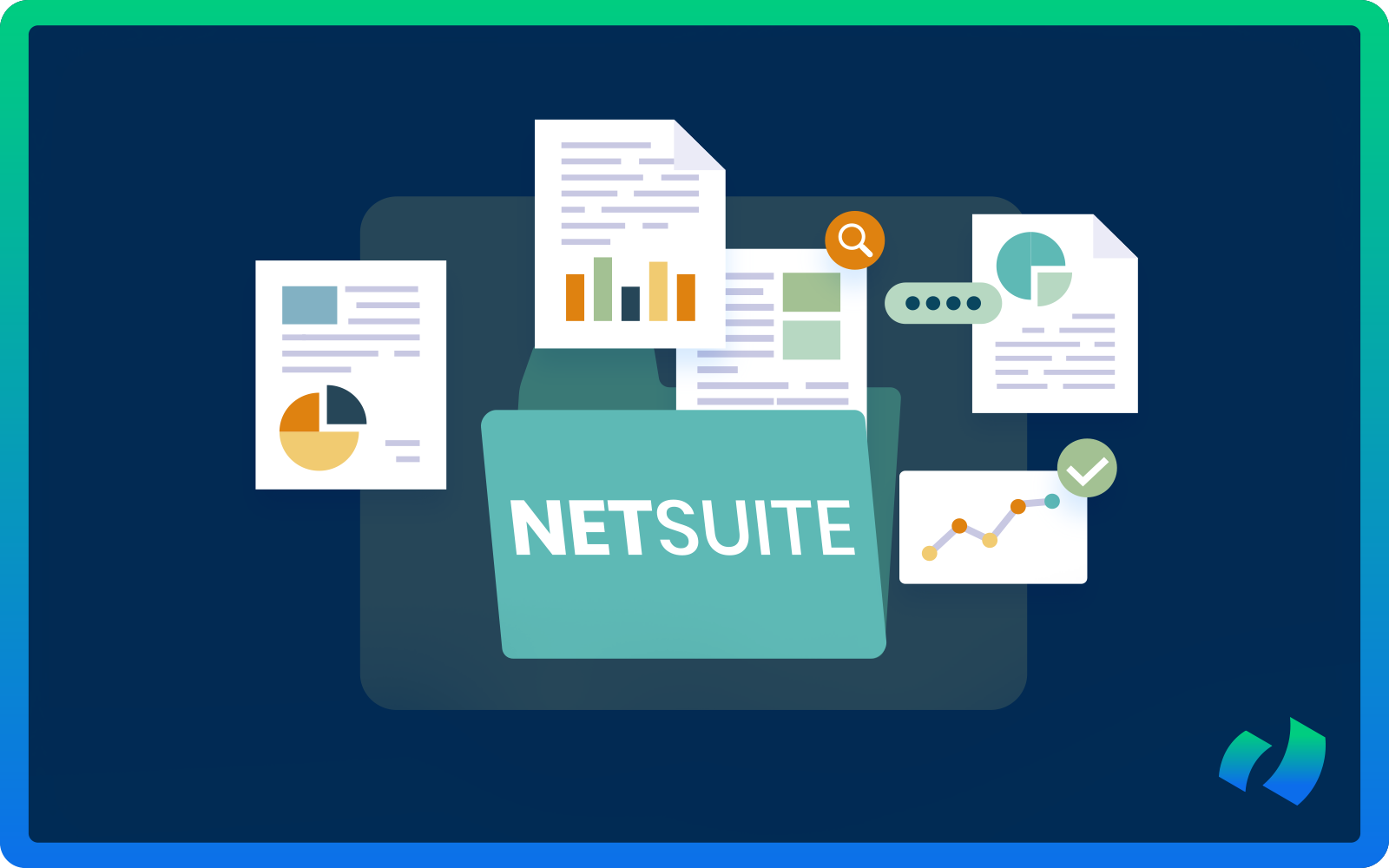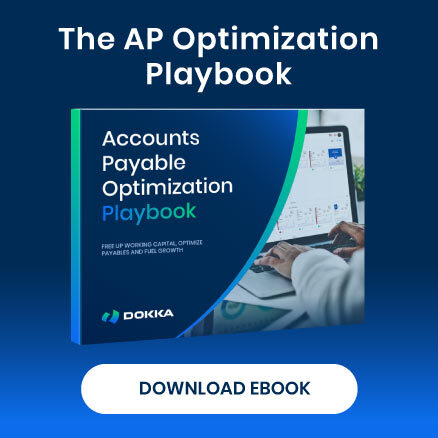Even though DOKKA is the AP automation tool of choice for NetSuite users, we often like to explore other NetSuite features and help you improve your workflows. Among the many features available in NetSuite, two of the most commonly used tools for data analysis and retrieval are Saved Searches and Reports. While both serve the purpose of accessing and analyzing business data, they differ significantly in design, usage, flexibility, and output.
The following article explores the core differences between NetSuite Saved Searches and Reports, outlines their pros and cons, and offers guidance on when to use each tool to maximize efficiency and gain actionable insights.
Part I: What Is a NetSuite Saved Search?
A Saved Search in NetSuite is a customizable query tool that enables users to search for and analyze records across the system in real time. Users can apply detailed filters, sort results, display specific fields, and build formulas to create custom data points.
Widely used across NetSuite modules (CRM, financials, inventory, and sales), Saved Searches are especially valuable to administrators, analysts, and advanced users. These individuals often require flexible access to granular data and the ability to manipulate and distribute that data on demand.
Key Features of NetSuite Saved Searches
- Real-time results: Data is retrieved dynamically to reflect the most current state.
- Filtering and criteria: Logical operators enable the creation of highly specific filters.
- Highlighting and formulas: Custom fields and conditional highlighting enhance data visibility.
- Export and email automation: Results can be scheduled for email delivery or exported to Excel or CSV.
- Drill-down capabilities: Individual results can be clicked for more detailed views.
- Dashboard integration: Saved Searches can be displayed as portlets, such as reminders or trend graphs.
When to Use a Saved Search: Use Case Scenarios
Saved Searches are particularly effective when working with live data, applying complex filters, automating alerts, or displaying operational metrics directly on user dashboards.
Here are some of the most common use case scenarios:
1) Operational Monitoring
Saved Searches are ideal for real-time operational tracking. For example, a warehouse manager might use a Transaction Saved Search to monitor open sales orders or inventory items that have dropped below their reorder point. Because these searches retrieve the most current data, users can respond immediately to issues such as delayed shipments or low stock—without needing to generate formal reports.
2) Custom Alerts and Notifications
Running Saved Searches on scheduled intervals and emailing results to users enables proactive alerting. For instance, teams can be notified when a customer places an unusually large order, a project becomes overdue, or a vendor bill exceeds a certain threshold. These automated alerts reduce the need for manual checking and ensure timely responses.
3) Data Export for Analysis
When external analysis is needed in tools like Excel or Google Sheets, Saved Searches offer an efficient solution. Users can quickly export filtered, structured datasets. A finance analyst, for example, might extract outstanding receivables for end-of-month reconciliation or forecasting purposes.
4) KPI Tracking
Embedding Saved Searches in dashboards as KPI scorecards or trend graphs provides quick visual insight into key metrics. A sales director could track total closed deals this month versus last, or monitor customer acquisition trends. These visuals support faster, data-driven decision-making.
5) Workflow and Automation
For advanced users, combining Saved Searches with workflows or scripts can streamline operations. A Saved Search might identify all overdue customer contracts, triggering a scheduled workflow to send reminders or assign follow-up tasks. This kind of automation enhances efficiency and reduces manual effort.
6) Cross-Record Data Relationships
Saved Searches can join related data from multiple record types—something traditional reports often handle less flexibly. For example, it’s possible to display customer names, last purchase dates, and average order values in a single view, even if those fields reside in different tables. Such visibility is invaluable for building comprehensive datasets.
7) Search Optimization
Saved Searches excel in handling large datasets and complex filtering logic. Users can create conditions using formulas, relative dates, text parsing, and other advanced criteria. One example might involve identifying all customers who haven’t ordered in 90 days, currently have open support tickets, and lack scheduled follow-ups—a scenario difficult to manage with standard reporting tools.
Types of Saved Searches
- Transaction Saved Search
Targets financial and logistical transactions such as invoices, sales orders, purchase orders, and journal entries. Ideal for monitoring monetary activity, operational workflows, and sales performance.
- Customer Saved Search
Retrieves customer records using filters like location, sales volume, industry, or status. Helps segment customer bases, track engagement, and identify high-value clients.
- Item Saved Search
Focuses on both inventory and non-inventory items, including services. Enables analysis of stock levels, pricing, sales trends, and demand forecasting.
- Employee Saved Search
Provides access to employee records for HR and security needs. Commonly used to monitor roles, departments, login activity, and enforce internal compliance.
- Opportunity Saved Search
Facilitates sales pipeline management through retrieval of opportunity records. Tracks deal stages, projected close dates, opportunity values, and sales rep performance.
- Case Saved Search
Supports customer service functions by extracting case records. Assists in evaluating resolution times, escalation patterns, and case types.
- Custom Record Saved Search
Applies to user-defined record types that reflect a company’s unique processes. Offers full search functionality across any customized NetSuite objects.
Saved Searches – Pros:
- Highly customizable
- Real-time data
- Can be displayed on dashboards
- Better suited for operational users and analysts
- Excellent for alerts and automation
One of the greatest strengths of Saved Searches lies in their high level of customization. Users can define which fields to display, apply specific filters, and even create custom formulas. These searches are particularly valuable for operational users and analysts who require up-to-date, flexible insights into day-to-day activities. Their integration with dashboards, automation tools, and scheduled email delivery adds to their versatility within NetSuite.
Saved Searches – Cons:
- Requires deeper NetSuite knowledge
- Not ideal for formal presentations
- Grouping and formatting limitations
Despite their capabilities, Saved Searches come with some drawbacks. They are generally not well-suited for formal presentations or printed reports, as they lack the polished formatting and advanced grouping options available in traditional reports. Additionally, effective use often demands a deeper understanding of NetSuite’s schema and logic, particularly when working with formulas or joined fields. Grouping and subtotal functionality can also be less intuitive and more cumbersome than native reporting features.
Part II: What Is a NetSuite Report?
A Report in NetSuite is a structured, formatted output that organizes business data into tabular layouts suitable for analysis, printing, or executive presentation.
Unlike Saved Searches, which offer dynamic and operational flexibility, Reports are built around predefined templates and are commonly used to summarize, group, and subtotal data in a formal, polished format.
Reports support core NetSuite functions such as financials, purchasing, sales, inventory, and project management. They are particularly valuable to finance teams, executives, and decision-makers who require structured insights into performance, trends, and compliance.
Key Features of NetSuite Reports
- Prebuilt templates: NetSuite includes a variety of standard report templates across functional areas, which users can customize to a limited extent.
- Grouping and subtotals: Reports allow data to be grouped by fields such as department, location, class, or time period, with automatic calculation of subtotals and totals.
- Summarization: Instead of presenting raw record-level detail, reports aggregate data to provide high-level overviews.
- Drill-down links: Summarized values are interactive, enabling users to click through to view the underlying transactions or records.
- Printable format: Report layouts are optimized for PDF generation and printing, making them suitable for distribution to stakeholders or auditors.
- Parameter-driven filters: Users can define criteria such as date ranges, subsidiaries, and locations prior to running a report, ensuring tailored output.
When to Use a Report: Use Case Scenarios
Reports are the preferred tool when the goal is to generate clean, aggregated views of data for high-level analysis or presentation.
They’re particularly effective for recurring financial or operational reporting where consistent layout is essential.
1) Financial Reporting
NetSuite Reports are especially effective in finance and accounting contexts. Whether generating a Profit & Loss statement, Balance Sheet, Cash Flow report, or Trial Balance, they offer structured views with headers, subtotals, and time-based comparisons. Finance teams frequently use built-in report templates, applying filters for departments, subsidiaries, or fiscal periods. The polished formatting ensures the reports are suitable for board meetings or compliance reviews.
2) Budgeting and Forecasting
Reports are commonly used to compare actual values against budgeted figures. Financial report templates with budget fields enabled allow decision-makers to evaluate spending alignment across departments and timeframes. Both summarized and detailed budget variances can be displayed, supporting strategic planning efforts.
3) Monthly and Quarterly Review Packages
Executives and stakeholders often require recurring report packages—such as monthly sales performance, project profitability, or departmental spending. The consistent layout and print-ready formatting of NetSuite Reports make them ideal for standardized reviews. While Saved Searches can provide the data, only Reports deliver the polished output expected by senior audiences.
4) Audit and Compliance
Reports play a critical role during audits and compliance reviews. For instance, a transaction detail report grouped by general ledger account and date helps auditors trace account activity. Their fixed formatting and ability to export to PDF also make Reports well-suited for satisfying regulatory documentation requirements.
5) Time-Based Aggregation
Aggregating data by time period—daily, weekly, monthly, quarterly, or annually—is straightforward with Reports. There’s no need for custom formulas or manual adjustments, which makes Reports particularly valuable for trend analysis where quick comparisons of revenue, expenses, or headcount are needed.
6) Executive Dashboards
Although Saved Searches can feed dashboard data, Reports are often used as sources for high-level summary metrics. Dashboards can display snapshots or KPIs derived from report data, giving senior management quick access to performance insights without requiring them to explore detailed transactions.
Types of NetSuite Reports
- Financial Reports
Include Income Statements (P&L), Balance Sheets, Cash Flow Statements, and General Ledger reports. These form the foundation of corporate financial oversight and are frequently customized to compare fiscal periods or break down data by department.
- Sales Reports
Track revenue, order volume, and sales rep performance. Ideal for analyzing customer purchase history, identifying sales trends, or evaluating pipeline conversion rates. Commonly organized by sales rep, product category, or region.
- Inventory and Purchasing Reports
Offer insights into inventory levels, item activity, reorder analysis, and vendor performance. Useful for supply chain teams to plan procurement strategies and optimize stock levels.
- Employee and Time Reports
Cover labor tracking, timesheets, and resource allocation. Frequently used in service-oriented or project-based businesses to monitor employee utilization and workforce costs.
- Project and Job Costing Reports
Serve professional services and construction firms by tracking profitability, billing, and hours logged against specific projects. Essential for margin analysis and performance monitoring.
- Custom Reports
Derived from standard reports, with added custom fields, filters, or grouping criteria. Enable tailored views that align closely with unique business processes and reporting needs.
Reports – Pros
- Ideal for recurring, standardized reporting cycles
- Easy to organize data by category or period
- Export to PDF/Excel with clean formatting
- No complex formulas or joins required
NetSuite Reports are best for users who need polished, presentation-quality outputs without spending time building formulas or working with joined record structures. They’re especially valuable to executives, finance teams, and compliance officers who rely on consistent reporting to guide decisions or meet regulatory needs.
Reports – Cons
- Harder to modify; often needs admin access.
- Doesn’t auto-refresh on dashboards.
- Lacks dynamic filtering and formulas.
- Fewer cross-record linking options
While Reports excel in layout and summarization, they are less ideal when deep customization or real-time filtering is needed. They are not intended for granular analysis or ad hoc querying and often require more system knowledge to modify or extend effectively.
How Reports and Saved Searches Work Together
NetSuite Reports and Saved Searches serve different purposes, but they are most effective when used in tandem. Using both tools enables teams to address a wide spectrum of reporting needs—from daily operations to executive-level analysis.
Example Use Cases:
- Sales: A Saved Search can track open quotes or apply custom pipeline logic, while a Report can present monthly sales by representative or region.
- Inventory: Saved Searches can flag low stock or delayed purchase orders; Reports, on the other hand, are useful for summarizing inventory valuation or turnover.
- Finance: Reports are ideal for formal P&Ls and balance sheets, whereas Saved Searches are better suited for monitoring unusual transactions or identifying real-time variances.
Choosing between Reports and Saved Searches doesn’t have to be a trade-off. Each tool brings distinct strengths—Saved Searches provide unmatched flexibility for analysis, alerts, and live data access, while Reports offer structured, presentation-ready output suited for financial and executive reporting. Used together, they create a robust reporting ecosystem that empowers informed decision-making across the organization.
Disclaimer: This article is based on publicly available information and the professional experience of the DOKKA team. DOKKA is not affiliated with Oracle or NetSuite.




